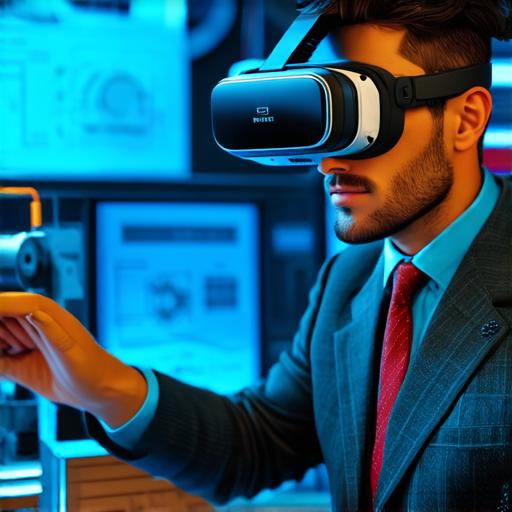Virtual reality (VR) technology has come a long way since its inception, and it’s all thanks to the pioneering work of early innovators like Ivan Sutherland. In this article, we will explore the history of the first VR headset and how it laid the groundwork for what we know today as immersive gaming and virtual experiences.
The Beginning of Virtual Reality: Ivan Sutherland’s Sketchpad

Ivan Sutherland is widely considered the father of virtual reality, having created the first VR headset in 1968. His invention was called the “Sword of Damocles,” and it consisted of a large, clunky headset with a projector mounted above it that tracked the user’s movements using a series of sensors.
Sutherland’s inspiration for the Sword of Damocles came from his work on Sketchpad, an early computer graphics program that allowed users to create and manipulate 3D objects in virtual space. With the headset, Sutherland aimed to create a fully immersive experience that would transport users into the world of their own creations.
The Challenges of Early VR: Limited Technology and High Costs
Despite its groundbreaking nature, the Sword of Damocles was far from perfect. The technology available at the time was limited, and the headset was bulky and uncomfortable to wear for extended periods. Additionally, creating 3D content for the system was challenging due to the limited processing power of early computers.
As a result, the Sword of Damocles was largely considered a novelty and saw only limited use in academic and research settings. It wasn’t until the late 1980s and early 1990s that VR technology began to gain traction in the gaming industry, thanks to advances in both hardware and software.
The Rise of Modern VR: Oculus Rift and HTC Vive
In 2012, Oculus VR launched their Kickstarter campaign for the Oculus Rift, a modern VR headset that promised to revolutionize the way we experience virtual reality. The Rift was designed with a focus on comfort and ease of use, featuring a lightweight design and advanced tracking technology that allowed for more realistic movement.
At the same time, HTC released their own VR headset, the HTC Vive, which featured even more advanced hardware and software capabilities than the Rift. Both devices quickly gained popularity among gamers and developers alike, leading to a surge in the development of VR content and experiences.
Today, VR technology has come a long way since its early days, with devices like the Oculus Quest 2 and HTC Reverb G2 offering even more immersive and realistic experiences. From gaming to education to healthcare, virtual reality is rapidly changing the way we interact with the world around us.
Conclusion: The Legacy of the First VR Headset
Ivan Sutherland’s Sword of Damocles may have been the first, but it was far from the last. The legacy of the first VR headset lives on in the technology we use today, and it serves as a reminder of how far we’ve come since its inception. As VR continues to evolve and advance, it will be fascinating to see what new innovations emerge in the years to come.
